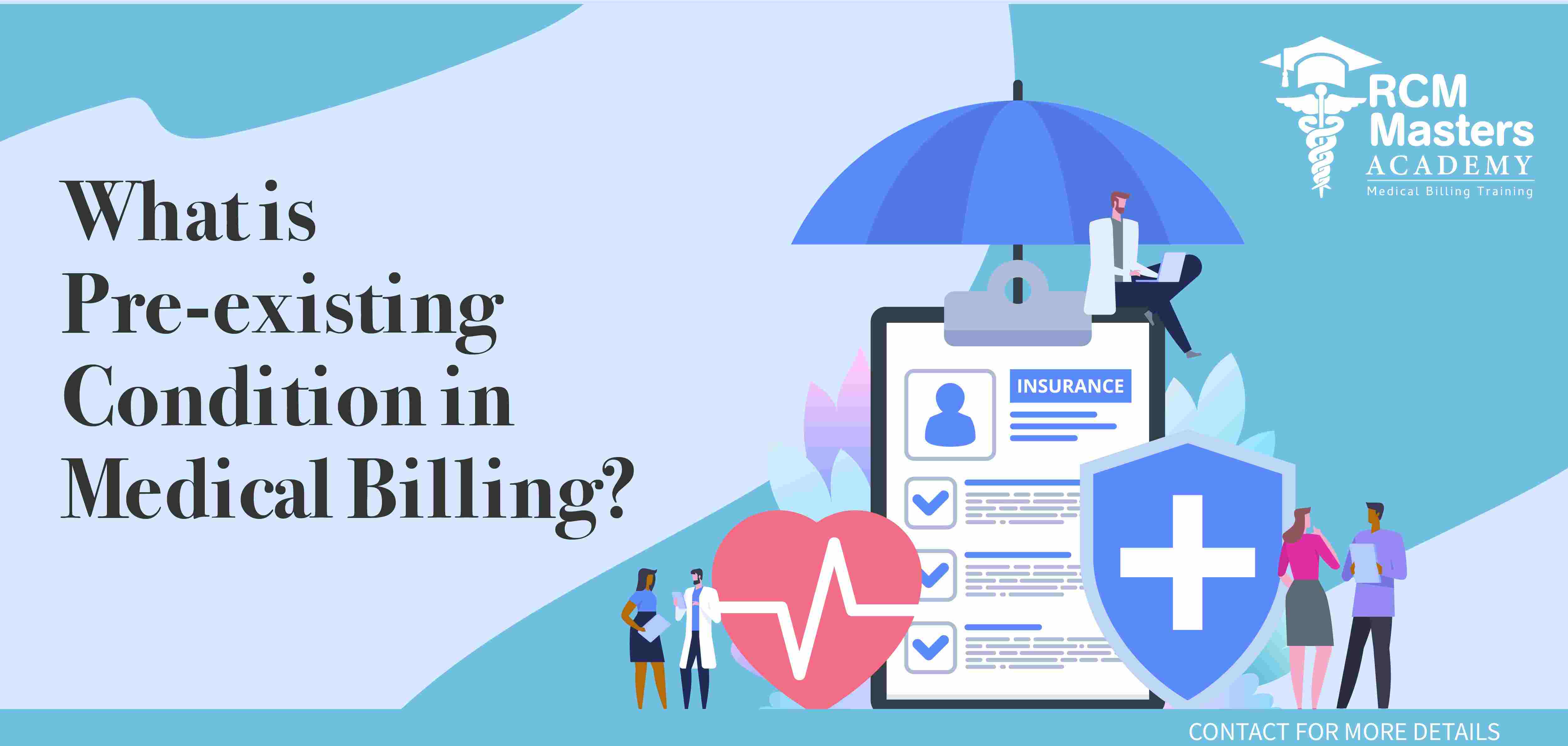 info@rcmmastersacademy.com
info@rcmmastersacademy.com

Medical billing can be a complicated process, and one of the terms that often confuses patients is "pre-existing condition." Simply put, a pre-existing condition is a health issue or illness that you had before you signed up for health insurance coverage. We'll explore what a pre-existing condition is in medical billing, how it can affect your coverage, and what you can do to manage your health care costs.
A pre-existing condition is a medical condition that you have before you sign up for health insurance coverage. It can be any health issue, from a chronic illness like diabetes or asthma to a more acute condition like a recent surgery or injury. Pre-existing conditions can be anything from a minor inconvenience to a significant health issue that requires ongoing treatment.
The way pre-existing conditions are treated in medical billing can vary depending on your insurance plan. Prior to the Affordable Care Act (ACA), insurance companies could deny coverage or charge higher premiums to individuals with pre-existing conditions. However, under the ACA, insurance companies are required to cover pre-existing conditions and cannot charge higher premiums based on an individual's health status.
That said, there are some exceptions to this rule. Short-term health insurance plans and some other types of coverage may still be able to exclude coverage for pre-existing conditions or charge higher premiums based on your health status. Additionally, if you have a gap in health insurance coverage, your new insurance plan may consider your pre-existing condition a "waiting period" and delay coverage for that condition.
If you have a pre-existing condition, it's important to understand how it can affect your health care costs. Depending on your insurance plan, you may need to pay more out-of-pocket costs for treatment related to your pre-existing condition. For example, you may have a higher deductible or co-pay for doctor visits or medications related to your condition. Additionally, if your pre-existing condition requires ongoing treatment, you may need to meet your plan's annual out-of-pocket maximum before your insurance starts covering the full cost of your care.
Managing the costs of a pre-existing condition can be challenging, but there are some steps you can take to help minimize your expenses. First and foremost, it's important to stay on top of your health care needs and follow your doctor's treatment plan. This can help prevent complications and reduce the need for more expensive treatments down the road.
You may also want to consider enrolling in a health savings account (HSA) or flexible spending account (FSA) if your insurance plan offers them. These accounts allow you to set aside pre-tax dollars to pay for qualified medical expenses, including those related to your pre-existing condition.
Finally, if you're struggling to afford your health care costs, don't be afraid to speak up. Many hospitals and health care providers offer financial assistance programs or payment plans to help patients manage their bills. You may also be able to negotiate a payment plan or lower rate with your provider if you're facing financial hardship.
In conclusion, a pre-existing condition is a health issue that you had before you signed up for health insurance coverage. While insurance companies are required to cover pre-existing conditions under the ACA, there are still some exceptions and ways that pre-existing conditions can impact your health care costs. By staying on top of your health care needs and exploring your options for managing your costs, you can better manage the impact of a pre-existing condition on your health and finances.
You can enroll for our Online Medical Billing Training here: